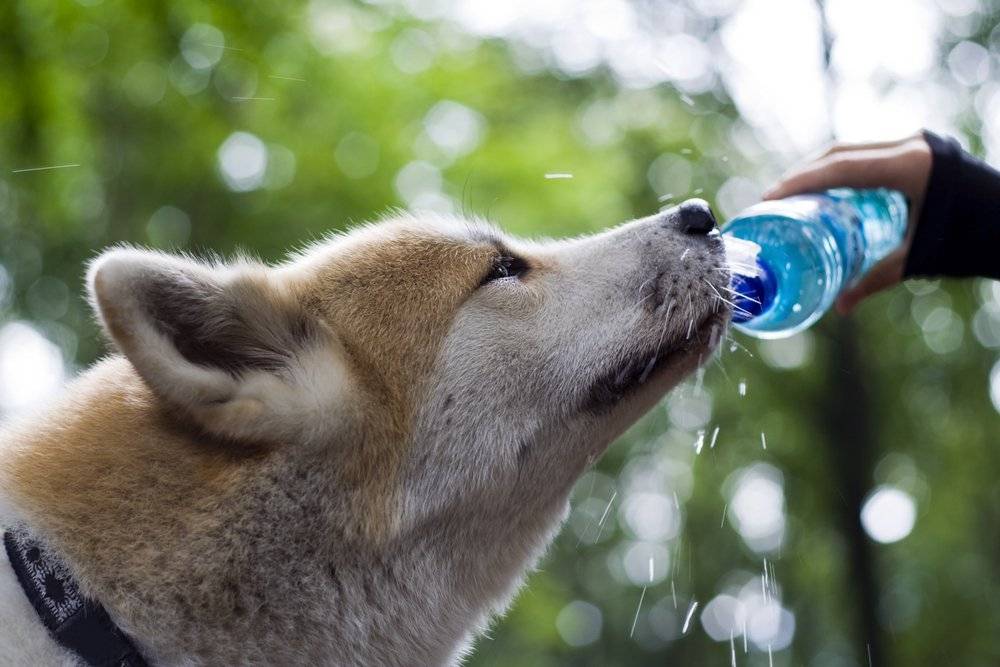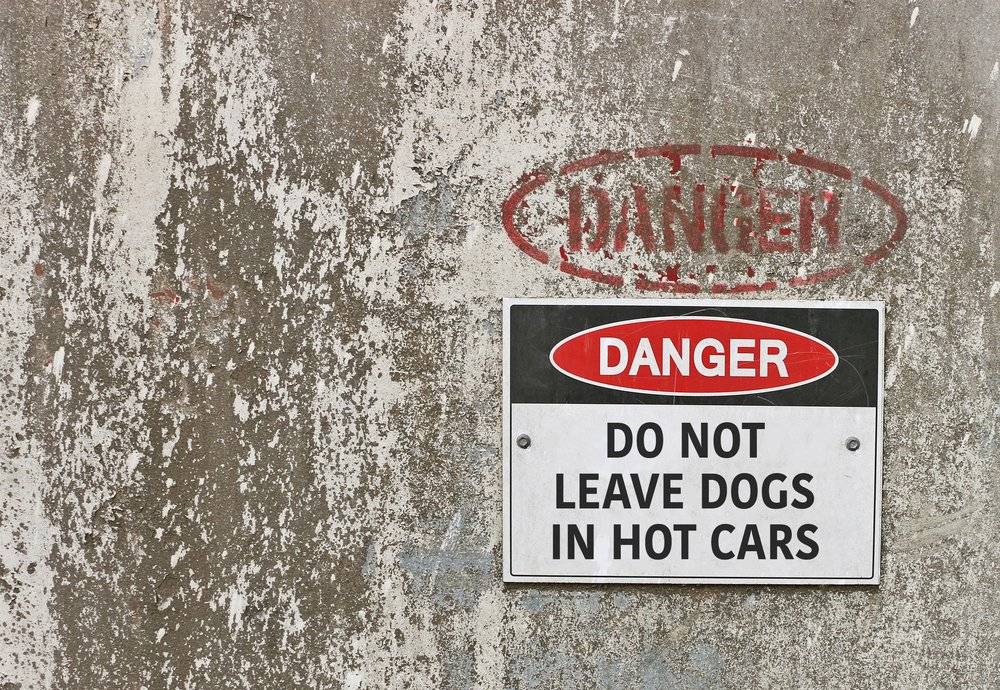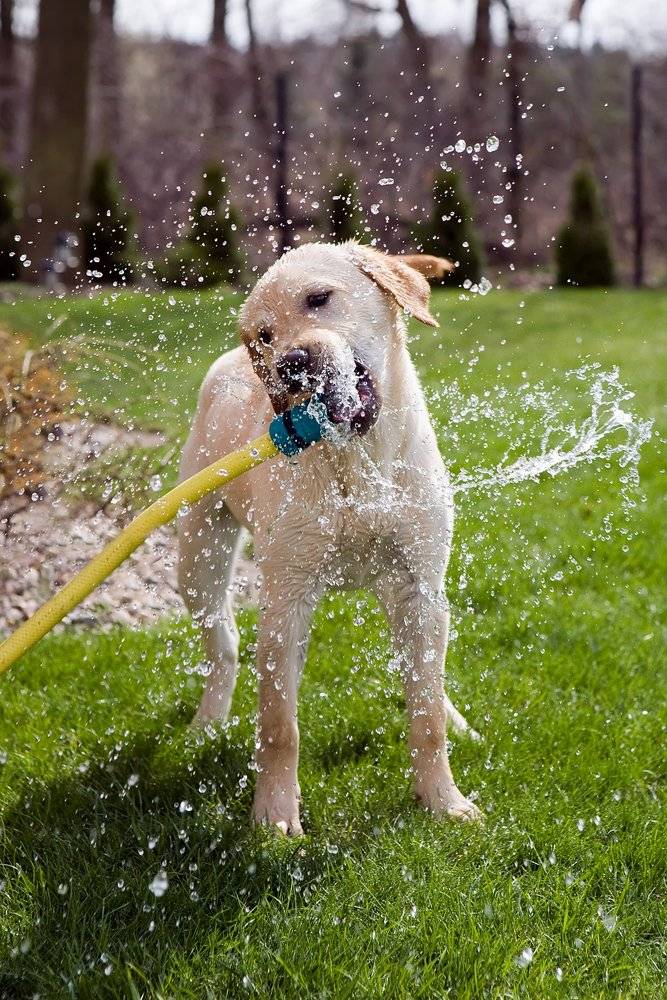The Fourth of July might be well behind us, but the summer heat is just starting to really gear up. August is just around the corner.That means that the season’s most sweltering temperatures haven’t even begun to hit us. Luckily, many of us don’t have to suffer through the heat and humidity that late summer brings the way our grandparents did. Thank goodness for the invention of A/C. But, how do we keep our dogs cool in the heat?
Our pups have a slightly more difficult time keeping themselves cool. Even if they live in a house with A/C. Their full-time fur coat doesn’t make that any easier. We have to think outside the box. Especially, if we’re going to keep our four-legged friends cool, comfortable, and safe as the temperatures begin to ramp up. Here’s a quick guide of tips to keep your pooch cool as days get shorter and hotter.
Know the Signs of Heat Stroke in Dogs
First, we feel the need to open this article on a serious note. Pet owners living where average summer temperature rises above 80°F needs to know how to recognize dog heat stroke signs.
It’s important to understand that any hot environment can cause a dog to succumb to heat stroke. Additionally, you should know that some dog breeds are more prone than others to suffer from heat stroke. Dogs like Bulldogs, Pugs, and Boston Terriers have harder time regulating their temperatures. This is due to their shorter nasal passages. Dogs who have thick fur, are elderly or obese are at a greater risk of heat stroke. This is due to their body’s inability to quickly regulate their temperature.
There are a few signs that a dog might be suffering from heat stroke. The most noticeable symptom is excessive panting. Other symptoms may include drooling, red gums, vomiting, diarrhea, loss of balance, or collapse. If you think your dog is suffering from heat stroke, make no mistake. This is a medical emergency. You must seek out professional care to ensure your dog’s safety.
Remove the dog from the hot environment as soon as possible. Cool your dog off by placing a towel or rag soaked in cold water on their back and around their neck. Pour cool water over their head, stomach, armpits, or feet to help aid temperature regulation. Offer your cool water, but do not force them to drink.
Once you’re at the veterinarian, the prognosis for your pup will depend on how high the body temperature is elevated and how long their heat stroke has persisted. If treatment is sought as soon as possible, most healthy pets will recover fairly well without too many complications. Your vet will monitor your pet for secondary complications that may arise as a result of heat stroke. Such as kidney failure, abnormal blood clotting, or sudden collapse.
Keep Cold Water on Standby
It doesn’t matter if you’re in the backyard or going on a multi-mile trek in the backwoods. You need to have fresh, clean, cold water that’s easily accessible during the summer months. The last thing you want is for a particularly nasty wave of heat to wash over you and Fido while you’re out and about without an easy way to keep them hydrated.
You can accomplish this relatively easily. Just bring a portable, collapsible water bowl or a squirt bottle with you wherever you take them and remember to stop and hydrate every 20 minutes. Remember to bring enough cool water to last the entire time that you’re out and about, too! The last thing you want is to find yourself halfway back to your car with the sun beaming down from overhead and no water to spare.
However, if you suspect that your dog is in dire need of water, remember to have them sip on it, not slurp it up. As Arleigh Reynolds, Purina Senior Research Nutritionist, says: “For a forty-five to fifty-five pound dog, don’t let them drink more than four to eight ounces of water at a time. After they’ve had time to absorb it and get it out of their stomach, give them some more ten or fifteen minutes later.”
The reason for this warning is because dogs who swallow too much water in a short amount of time may begin to suffer from what’s known as water intoxication. While rare, this condition can lead to brain damage and can sometimes even be fatal. Some signs of water intoxication to look out for include vomiting, loss of coordination, bloating, pale gums, or trouble breathing. If your dog begins exhibiting any of these symptoms after drinking a decent amount of water, call your veterinarian immediately.
Avoid Going Outside During the Hottest Part of the Day
It seems simple (and obvious) enough: who wants to go out when it’s so hot outside you could cook an egg on the sidewalk?
And yet many pet parents do exactly that and trot their furry friends on the blistering sidewalks as the sun scorches overhead. This, to put it lightly, is foolish, unnecessary, and dangerous.
If you know that the weather outside is going to be particularly unforgiving temperature-wise, then opt to take your dog outside during the cooler parts of the day like early morning or later evening.
Always check the temperature of the surfaces before you walk your dog. Even when the outside temperature feels relatively comfortable to you. That isn’t a reliable indicator of how the ground feels against the pads of your dog’s feet. In order to ensure the ground is a safe temperature for your dog, lay the back of your hand on the ground. Humans can not endure the heat from the ground for at least seven seconds, therefore it is not a suitable temperature for your dog’s paws.
If you decide to bypass this safety protocol, be warned that your dog’s paws will likely be burned. When walking outside with your dog and you notice they show great hesitation to continue the walk, move to some shade and gently inspect their paws. If the pads on the underside of their paws appear red or swollen, they may have a first degree burn. However, if blisters are visible or, worse, if the skin is charred, then a second or third degree burn may have been generated.
In the event that you suspect your dog’s paws have been burned, you must consult your veterinarian immediately to ensure proper aid is rendered. However, in the meantime you can cool the affected paws under running, cool water and then bandage them. This will prevent further injury from taking place.
Stay Out of Hot Cars
Every year there are PSAs published warning pet owners about the dangers of leaving their dogs in unattended, hot cars. And every year hundreds of innocent pets die from being left, unattended, in hot cars.
What’s worse is that some pet parents think that so long as they employ what they believe are effective heat mitigation strategies – such as cracking windows – then no danger is posed to their beloved pet. This is a massive error in judgement, and it stems from plain ignorance to how hot cars get.
According to the Centers for Disease Control and Prevention (CDC), cars that are parked in direct sunlight can reach internal temperatures between 131°F and 172°F when it’s between 80°F and 100°F outside. The lower bound of that temperature range, 80°F, should surprise you, as 80°F feels relatively mild to us. But, again, dogs are not humans. They have an entirely different anatomy and entirely different mechanisms through which they can cool themselves. Not to mention the whole-body fur coat they’re wearing!
So, if you must travel with your dog this summer, please do not, under any circumstances, leave them in your car. It is simply too dangerous. Plus, bringing them in with you is sure to net them lots of pets! So, by practicing good pet ownership, you can both ensure their safety while making their day that much more filled with love!
Play in the Water (with Caution)
Who doesn’t love to take a nice dip in the pool/river/lake/ocean on a hot summer day? It’s simply the most effective and fun way to cool off when it feels like an oven outside. Same goes for your pets, too!
And don’t fret if you don’t have ready access to a neighborhood pool or another naturally occurring water source! You can always place a small kiddie pool on the patio. Your dog can simply stand in the water and cool off. This is useful since dog’s pads are where they can actually sweat from. Standing in cool water is a surefire way to help stave off the heat.
If you do decide to take them to a larger body of water, remember to have them enter it slowly. Changing his body temperature too abruptly can actually cause his internal organs to heat up faster, rather than slow down. Instead of letting him gallop into the water full-steam-ahead, let him stand in the cold water for a while and gradually get deeper and deeper.
Inspect the strength of any currents or tides in the bodies of water where your dog is swimming. Assess whether your dog is capable of safely swimming there. You may even think “But don’t all dogs just innately know how to doggy paddle? It’s in the name after all.” This is a misstep in thinking. The claim that not all dogs know how to tread water is evidenced by the fact that tens of thousands of dogs die each year from drowning. It’s best to equip your little paddler with a life vest when they’re in still or very slow moving water. Avoid all sources of water that appear to have any genuine pull to them.
Use Banixx for Dog Skin Irritated by Foul Water
Inspect the water quality where your pup is going to be taking a dip. Some types of algae present in freshwater sources are toxic to dogs. Wash salt and sand off of your dog’s coat after they’re done swimming. This prevents it from drying and irritating their skin. In the event that you forget to do this and you notice that a skin infection begins developing, don’t worry just reach for Banixx!
Banixx is a clinically-proven formula that provides instant, sting-free, odorless relief for a variety of maladies. Including skin infections, ringworm, ear infections, and more, without relying on pesky steroids or antibiotics. Just identify the affected area, apply Banixx twice daily, and wait. Within minutes of application, your dog’s discomfort should dissipate and their spirits will rise. With Banixx, relief really can be that simple.
We hope you found this article helpful and if your dog ever gets any cuts, abrasions, ear infections or hot spots, we hope you keep Banixx Pet Care in mind. Go to our dog page to learn more about how to keep your dog happy and healthy! Just as an example, do you know how long your dog can go without peeing? or Why your dog drinks out of your toilet?
Share this Post
Featured Post
Recent Posts

Managing the Mamas –Part 2 –The development process

Managing the Mamas: Part 1 – Preparing to Breed Your Mare

HOW MANY TOES?? Caring for the Polydactyl Cat
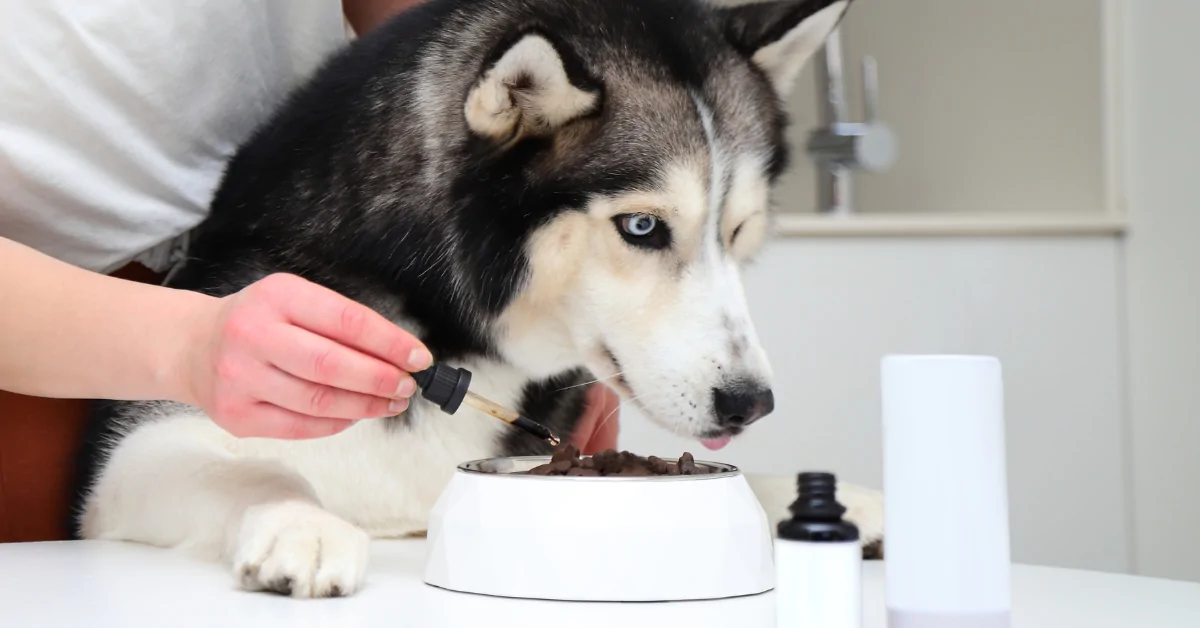
Do Dog Joint Supplements Actually Work?
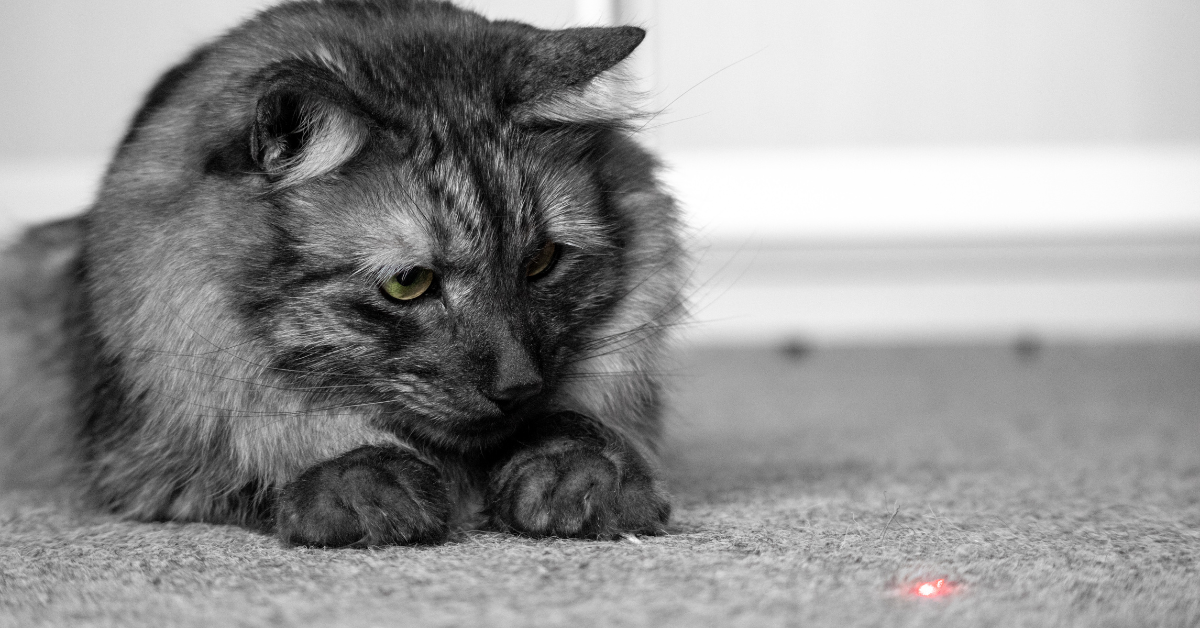
Are Laser Pointers Bad for Cats? or, are they Purr-e Fun?



